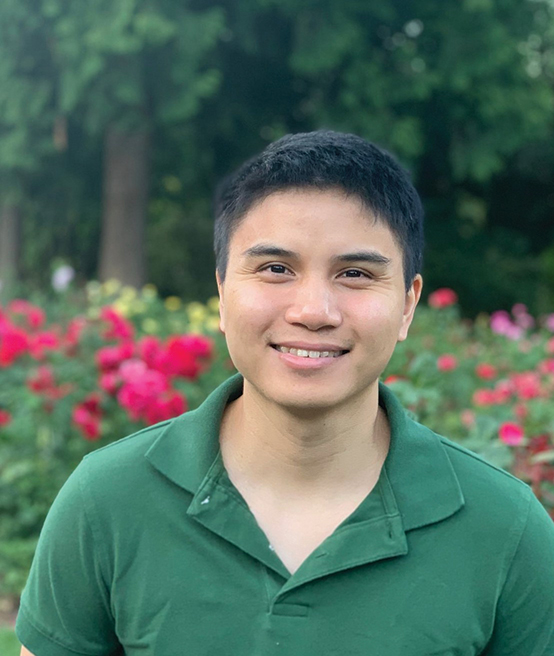Jonathan Handali ’13
 DEGREE:
DEGREE:
B.S. in physics and chemistry; Ph.D. in chemistry, University of Wisconsin-Madison
JOB TITLE:
Lithography process engineer, Logic Technology Development, Intel Corporation
FAVORITE TRINITY MEMORY:
I have a lot of good memories from Trinity, but I mostly enjoyed playing soccer with my friends in various places on campus. We played on the quad in front of the engineering building, on the football pitch in the summer with the Hartford locals (who were all way better than us), and in a dark, old gym at the very back of the Ferris Athletic Center, where we had to set up our own goals using spare shoes.
What was your path to your current position?
My path to the tech industry began when I was offered a generous scholarship to attend Trinity, where I studied chemistry and physics. After graduating, I went to grad school to pursue a Ph.D. in chemistry at the University of Wisconsin-Madison, where I joined the spectroscopy lab of Dr. John Wright. As I was entering my fifth year of the Ph.D. program without a real postgraduation plan, I received an email from a former colleague at the UW-Madison Chemistry Department who was working for Intel; she informed me that her boss was recruiting engineers. I hastily put together a résumé and sent it to her, and her boss called me to begin the recruitment process. I consider myself fortunate to have been entering the job market at just the right time and to have had just the right connections.
What do you do in your role?
As a lithography process engineer, my role is to create the technology for a very small segment of the overall process that goes into making a computer processor chip from bare silicon. It is the job of my team to figure out how to bring the designs for future technologies to life on the silicon wafer. Lithography is the step in the process where the pattern of the circuit is printed on the wafer, so I need to design ways to print nanometer scale holes and lines that will set the mask for the transistors and interconnects. Every new technology is harder to make since the transistors need to be continuously shrinking to increase processor performance, so my team and I need to develop new tricks and tools to make the process capable of delivering. Each step in the manufacturing process involves a lot of chemistry and engineering, and we optimize the process to the point where it is mature, robust, and high yielding, after which we hand off the technology to other teams who will manufacture the chips at high volume while we move on to the next generation of chips.
What do you enjoy most about your position?
My work involves collecting and tracking large amounts of data and using that data to make decisions on how the process can be improved. I find data crunching a little bit tedious and take a lot of joy in creating computer code that can query, process, and analyze data for my team and me. Creating automated solutions that save people time and energy in the long run is satisfying, especially when I see other people making use of it on a large scale.
What are the biggest challenges you face?
Figuring out a way to create billions of tiny structures on the order of nanometers and to have a small enough rate of failure that the chip still works at the end of the line is quite difficult. Oftentimes, we change some condition to try to address one particular problem and end up making something else worse. It takes a lot of time and work from many people just to make incremental improvements, and it can be quite challenging to stay patient and to continue to play my part as best I can.
What was the most memorable course you took at Trinity?
“Instrumental Chemical Analysis” began my interest in optical spectroscopy and lasers, which eventually became the subject of my doctoral dissertation, and my expertise in lasers helped land my job. It was the course that introduced me to the application of physics principles to address real-world problems, which I am now doing as a career.
Was there a professor at Trinity who was particularly influential?
The faculty members in the Physics and Chemistry Departments felt like an extended family of very smart uncles and aunts, all of whom were trying hard to educate and help the young ones in whatever way they could. It is difficult to pick a particular professor, but if I had to, I would say Associate Professor of Physics David Branning. He was my academic adviser and mentored me through the physics major. As I was growing up in Nepal, science was presented to me as something you had to try very hard to understand and be good at but not something you were necessarily supposed to enjoy. Professor Branning was the first person to instill in me the “isn’t this cool?” attitude to science with his enthusiastic teaching style.
